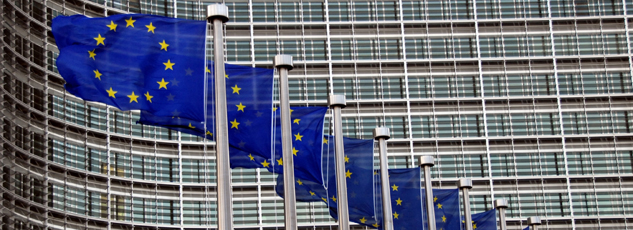The European Council has approved on October 24th, the 2030 Climate and Energy Policy Framework, that includes goals and targets to be achieved by 2030, as follows:
- reduction of greenhouse gas emissions by 40% compared to 1990 level
- 27% of energy consumption covered by renewable energy sources
- 27% of energy efficiency improvement in 2030 compared to projections of future energy consumption
- achievement of a fully functioning and connected internal energy market
- enhancing energy security of the European Union
Targets in detail
GHG emissions reduction
At least 40% domestic GHG emission reduction with 1990 as a baseyear will have to be achieved by 2030. The European Council endorsed a binding EU target of at least 40% domestic reduction in greenhouse gas emissions by 2030 compared to 1990. The target will be delivered collectively by the EU in the most cost-effective possible manner, with a contribution by the Emissions Trading (ETS) and non-ETS sectors amounting to 43% and 30% respectively (2030 target with 2005 as baseyear). All Member States must participate in this effort, balancing considerations of fairness and solidarity.
Renewable energy
EU target is set as a mimimum share of 27% of renewable energy in the energy mix consumed in 2030. This target is binding at EU level, meaning that all Member States will participate by setting their own targets and supporting them according to their national guidelines.
Energy efficiency
An indicative target of 27% is set for energy efficiency in 2030 compared to projections of future energy consumption based on the current criteria. The European Council will review this target by 2020 and will indicate the priority sectors in which significant energy-efficiency improvements can be achieved.
Achieving a fully functioning and connected internal energy market
Preventing inadequate interconnections of Member States within the European gas and electricity networks, and ensuring synchronous operation of Member States within the European Continental Networks as foreseen in the European Energy Security Strategy, will remain a priority after 2020. The European Commission supported by the Member States will take measures in order to ensure the achievement of a minimum target of 10% of existing electricity interconnections, as a matter of urgency and no later than 2020 especially for those Member States which have not yet attained minimum levels of integration in the internal energy market, namely the Baltic States, Portugal and Spain.
Energy security
European Council endorsed further actions to reduce the EU’s energy dependence and increase energy security for both electricity and gas. Main actions will be implemented to strengthen key infrastructural corridors and improve regasification and gas storage capacity.
Comments and Reactions
According to environmental organizations and professional categories, the overall set of targets is very weak and not able to tackle climate change. Even though the binding target to reduce greenhouse gas emissions by at least 40% by 2030 is recognized as an important first step, the other two targets (renewable energy share and energy efficiency improvement) are considered inadequate, since they are merely aligned with the authonomous improvements foreseen according to current market trends. A recent analysis by Ecofys shows that target of 27% for the share of renewables in overall energy demand by 2030, is no greater than the share expected under business-as-usual growth. In addition the study argues that cost-effective measures in efficiency and realistic developments in renewables could halve the EU’s imports of natural gas, while reducing emissions of greenhouse gases by 49 per cent by 2030 (compared to 1990). This leaves substantial room for accelerated renewable energy sources and energy efficiency measures deployment and for setting more challenging targets.
IPCC’s Working Group has also commented EU Council’s act. According to the outcomes of its Fifth Assessment Report, the goal of cutting GHG emissions of 40% by 2030 is not consistent with the 2050 roadmap. In order to remain below the critical threshold of 2°C global warming, we must achieved a much more radical level of GHG emissions cuts, ranging between 80 and 95%.
Follow up
The approval of the 2030 Climate-Energy Package is an important step towards COP 21 that will take place in December 2015. EU decisions put pressure on the US and China to define forward early and ambitious targets for the Paris negotiations.

